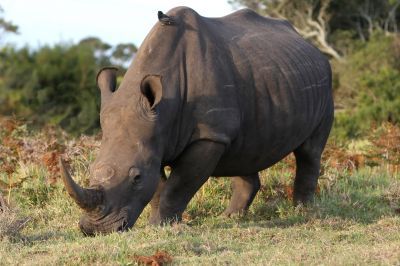Nepal emerges as 'poacher's paradise'

Your support helps us to tell the story
From reproductive rights to climate change to Big Tech, The Independent is on the ground when the story is developing. Whether it's investigating the financials of Elon Musk's pro-Trump PAC or producing our latest documentary, 'The A Word', which shines a light on the American women fighting for reproductive rights, we know how important it is to parse out the facts from the messaging.
At such a critical moment in US history, we need reporters on the ground. Your donation allows us to keep sending journalists to speak to both sides of the story.
The Independent is trusted by Americans across the entire political spectrum. And unlike many other quality news outlets, we choose not to lock Americans out of our reporting and analysis with paywalls. We believe quality journalism should be available to everyone, paid for by those who can afford it.
Your support makes all the difference.Forest warden Narendra Man Babu Pradhan is on the frontline of Nepal's battle against poachers and he grimaces as he recalls the recent discovery of an injured rhino whose horn had been cut off.
"We found a male rhino with bullet in his head around a lake in the park. It was a horrific sight," said Pradhan, who was informed by tour guides about the injured animal.
"The poachers had cut the horn off without killing it and it seemed in great pain," said the chief warden of the Chitwan National Park in southwest Nepal, a UNESCO world heritage site that is popular with foreign tourists.
Pradhan, who said the incident was the worst of his 20-year wildlife career, did everything he could to save the rhino but it died within two weeks.
In Nepal, poaching is getting worse, conservationists say, and the country has emerged as a hub for the illegal trade in animal parts given its strategic location between India, the source of material, and the Chinese market.
Porous borders, a lack of coordination between countries in the region and political instability in Nepal mean the men with guns and underworld connections are gaining the upper hand.
"The disappearance of tigers and seizures of skins, bones and rhino horns indicate poaching and trafficking is growing," Shiva Raj Bhatta, spokesman at Nepal's department of national parks and wildlife conservation, told AFP.
"Our wildlife is in a critical stage. We believe Nepal is fast developing as an international hub for wildlife trade and turning into a poacher's paradise."
Chitwan Park has lost 24 rhinos - 17 of them killed by poachers - in the past 18 months.
The figures for Asian big cats are not encouraging either.
A new tiger census carried out earlier this year showed that there were 121 adult tigers in Nepal's parks. In two parks in southwestern Nepal, the numbers fell by 60 percent, from 65 to 26.
World Bank president Robert Zoellick, who sent a video message to a tiger conservation forum at the end of October, said that traders and poachers were better organised than policymakers and conservationists.
"At present the illegal trade in wildlife is estimated at over 10 billion dollars (annually) across Asia - second only to weapons and drug smuggling," he said.
In India, where tiger numbers are dwindling, experts say the border between India and Nepal serves as the principal route for contraband from India to the main market in China.
Poachers bribe poor forest dwellers to guide them through the dense jungles.
Part of the problem in Nepal, explained Bhatta, is that recent political turmoil has handed smugglers the opportunity to expand their operations.
Nepal's decade-long civil war between Maoist rebels and the state ended in 2006 with a UN-brokered peace agreement.
Since then the country has seen tumultuous change, with the ultra-leftists winning landmark polls, abolishing the 240-year-old monarchy and declaring Nepal a secular state before their government fell in May.
"Before the peace accord, the army used to be mobilised both inside and outside the parks, which created a psychological deterrent to the poachers," Bhatta said.
"Now the army is confined just inside the parks and in barracks."
Tiger and leopard parts, rhino horns, otter skins, live birds and turtles are known to pass through Nepal.
Rhino horns are highly valued as an aphrodisiac in China, and are used to make dagger handles in Arab countries.
Tigers attract huge sums of money in Asia, with their body parts used in traditional medicines and aphrodisiacs while their skins are used for furniture and decoration.
Samir Sinha, head of TRAFFIC India, a wildlife trade monitoring network, agreed with Zoellick that smuggling in animal parts had grown into a multi-billion-dollar business.
"All the signals are there to suggest that wildlife trafficking is fast emerging as transnational crime and is growing alarmingly," Sinha told AFP. "It will be difficult to win a battle against the traffickers unless countries collaborate with each other and share information and intelligence regularly."
A single tiger skin fetches a maximum of about 1,000 dollars in the local market, but more than 10,000 dollars internationally.
A single rhino horn can fetch as much as 14,000 dollars on the international black market, experts say.
Prasanna Yonzon of Wildlife Conservation Nepal, a local group monitoring the illegal trade, said Nepal had "ideal conditions" for wildlife trafficking as the borders with India and China are porous and lack proper security.
"Nepal is not the market for consumption and we don't have control over the market," said Yonzon, whose group has helped authorities nab over 100 poachers and traders through undercover operations in the last four years.
"The main market is China and other Asian countries. We are just being used as a conduit route to smuggle wildlife parts to the end users in those countries."
dds/adp/lb
Join our commenting forum
Join thought-provoking conversations, follow other Independent readers and see their replies
Comments